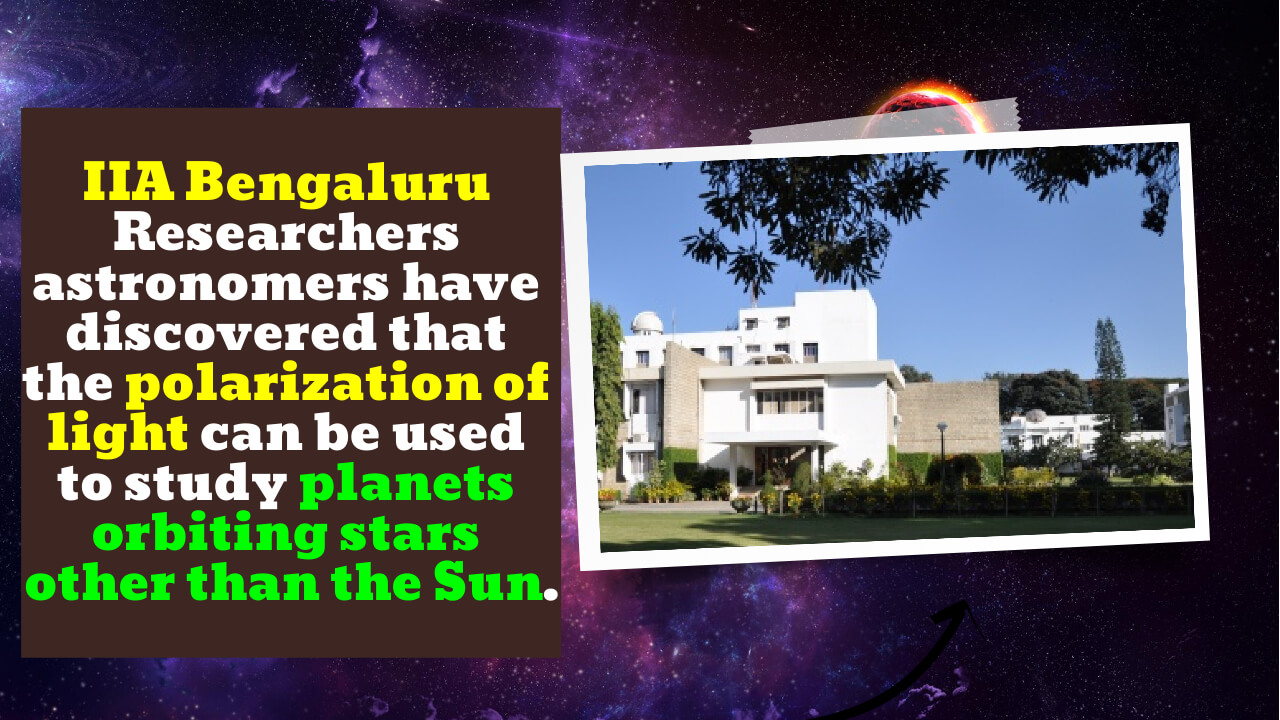The planets orbiting other stars than the Sun can be examined with the use of already-existing instruments. It’s possible to detect polarisation signatures or differences in light scattering. More than 5000 of these exoplanets have been seen so far, according to Indian astronomers. The investigation could provide information about the atmosphere’s chemical makeup and other characteristics. Existing devices can detect polarisation signals or fluctuations in the strength of light scattering, which can be used to research planets beyond the solar system. When the starlight is obscured, a simple polarimeter can measure the polarization at various wavelengths.
Key Highlight:
- The planets orbiting other stars than the Sun can be examined with the use of already-existing instruments.
- It’s possible to detect polarisation signatures or differences in light scattering.
- More than 5000 of these exoplanets have been seen so far, according to Indian astronomers.
- The investigation could provide information about the atmosphere’S chemical makeup and other characteristics of planets beyond the solar system.
- According to Aritra Chakrabarty, the findings will aid in the construction of sensors that are sensitive enough to guide observers.
- The research was carried out by the Indian Institute of Astrophysics.
Planets orbiting stars other than the Sun can be examined using existing tools by monitoring polarization of light and looking for signs of this polarization in the planets.
These polarization signals or variations in light scattering intensity can be seen using existing sensors, thus increasing the study of planets beyond the solar system using existing technologies, according to Indian researchers.
Astronomers have just discovered that other stars have planets orbiting them, just like our own. Approximately 5000 of these exoplanets have been found thus far. Indian Institute of Astrophysics (IIA) researcher Sujan Sengupta, a scientist at the Indian Institute of Astrophysics, Bangalore, a government-funded research center, proposed that the thermal radiation of young planets and the reflected light from planets orbiting other stars, known as exoplanets, would also be polarized. The measure of the polarization might reveal the chemical composition and other properties of these planets.
Brown Dwarfs, which have an atmosphere similar to Jupiter’s, have inspired researchers worldwide to develop polarimeters and employ polarimetric techniques in their investigations of exoplanet environments.
Exoplanet polarization has been simulated using a three-dimensional numerical method created by Sujan Sengupty, an IIA postdoctoral researcher. Oblate exoplanets are similar to the Solar-planets because of their fast spin rotation. A planet’s position in relation to the star affects how much brightness it is exposed to. Asymmetry in the light-emitting area results in non-zero polarization.
Research published in “The Astrophysical Journal” has developed a Python-based computational algorithm that combines the latest planetary atmosphere model and utilizes all such asymmetries of an exoplanet orbiting its parent star at different inclination angles. Calculated polarization at various latitudes and longitudes of the planet’s lighted and rotationally induced oblate surface, then averaged them over this surface. When the starlight is obscured, a simple polarimeter can measure the polarization at various wavelengths. An exoplanet’s chemical composition and atmosphere can be studied with the help of this instrument.
A few tens of millions of parts per million of unpolarized stellar light will mix with the polarized planet-reflected light, which can still be detected by high-end sensors like HIPPI, POLISH, PlanetPol and the like. According to Aritra Chakrabarty, the findings will aid in the construction of sensors that are sensitive enough to guide observers.
This polarimetric method may discover and study exoplanets with a wide range of orbital inclination degrees, unlike the classic and popular methods such as Transit Photometry and Radial Velocity. We will soon be able to examine exoplanets in a new light thanks to polarimetric techniques, which will open up a new window and allow us to overcome many of the constraints of previous techniques.
It is possible to observe these polarization signals or fluctuations in the intensity of light scattering using existing instruments, according to a Ministry of Science and Technology (MOST) note.




